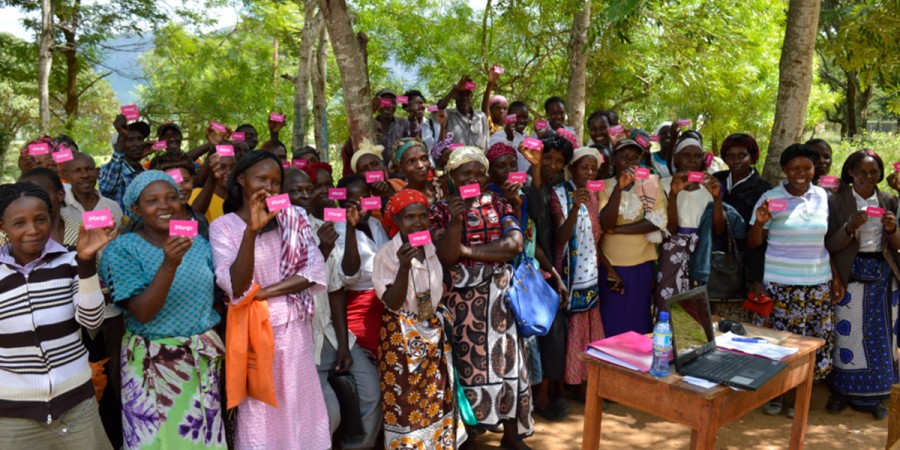The call is out, loud and clear, for the Humanitarian Sector to embrace Cash, as the way ahead for effective programming.
You are probably reading this because you already know about this call. Others are better qualified to explain why Cash and Digital Payments make sense, so let’s start with the premise that this is a really important objective, and the challenge is how to achieve the transition.
Simple surely? That’s what I thought when I first became involved. We all use payments, we all have trusted digital payment instruments, and the technologies that support payments are built on significant investments by the payment services providers to ensure they are robust. These technologies can support either an end-to-end digital transaction, or a cash-out by an individual who holds digital money. Simple, surely, to focus this capability on the Humanitarian ‘sector’?
Three years on, some good progress has been made, but it is proving to be a difficult transition.
As a provider of one technology variant (there are different ways to make payments), and one built on compliance with a country’s regulatory requirements (yes, payments do need to have regulation) I am observing at close hand the Humanitarian Actors taking a long run-up to getting this done. There is progress, but the approach – procurements for framework partners, the seeking of ever-more flexibility in meeting often curiously complex programme designs, the number of pilots (are they really that different?), the blurred lines between the role of the NGO and the role of the technology provider, even the contemplation of building payments technology platforms by NGOs (really?) – seems to getting us all bogged down.
The opening question in many discussions with NGOs is ‘how much does it cost?’, the second question usually a variant of ‘we have a special requirement and we need to know how flexible is your technology?’, and the third is often ‘will you provide a trial?’. With millions of dollars spent developing high integrity payments systems, and with high volume proof of these systems working, such an approach can seem a bit, well, frustrating. The other day an NGO asked me to explain how the underlying code was built!
Perhaps we need a paradigm shift. At the moment, the NGOs and programme deliverers are trying to become deeply involved in the technologies and end-to-end workings of payment systems, to reach their objective of transitioning to cash and payments. Could the payments technology and payments service providers step forward more boldly to ensure the technology is available closer to the Humanitarian ‘action’, and could the Humanitarian actors better embrace them as partners in payment services to beneficiaries, rather than ingredient suppliers?
An analogy might be the way you rent a car. You rent a transport service, you choose where you want to pick it up, you ensure you are qualified to drive it, you decide how big it needs to be (how may ‘beneficiaries’) and for how long you want it. Then you drive it, from A to B. You expect it to work, and if something goes wrong, you expect it to get fixed. You might be interested in its power or its economy, but you don’t get too much more involved in how it works. You just use it.
Isn’t that what a payments service needs to be? The donor or NGO wants to get digital value from A (source) to B (beneficiary), and maybe C (an agent, if you are settling a digital transaction rather than just cashing out at B). You choose the size of the vehicle (how many beneficiaries, etc) and the specification (a voucher, an open system, a closed loop system), how long you need it for, you expect it to be available close to where you need it, and then you pay the published tariff and off you go. The provider provides most of the service, so the NGO can use the system with confidence.
It’s not a perfect analogy, but the point is that payment service providers are better placed to bring their technologies and services forward into this arena, and to work as partners alongside NGOs, rather than the NGOs becoming payments specialists. If the payments providers can field capability nearer to the point of use (analogous to investing in the car rental facility at the destination airport), then the NGO can get on with doing what NGOs do best – managing the overall programme, selecting the beneficiaries, and monitoring the impact. They should be users of the payments service (whilst not having to themselves become payments technicians). I’d bet that the overall cost would reduce, and the effectiveness would increase. Significantly.
There are relatively very few payments services providers, and even fewer which take regulation and data protection seriously. The more we can work across broadly similar programming requirements, the more standardised the offers become (variants yes, but fewer of them), and the better the value (think of it as the kind of vehicle variants that have to be offered by the rental company). Payments systems work most efficiently (cheapest!) when the system is doing the heavy lifting, and the number of tailored elements is small. We have learned this through experience, and it’s an important lesson for Humanitarian actors too.
The private sector, as we are referred to, is being encouraged to step up, to make commitments to support the Humanitarian agenda. Private sector payments systems providers can make a huge impact on this challenge of shifting to Cash and Payments. Let’s look for partnerships, as opposed to supplier procurements and pilots, to gain momentum. We can together create the networks that will enable better, faster delivery of payments services nearer to the point of demand, even in a Humanitarian theatre, and we can create, as partners, this shift to digital transactions, with improved transparency and better value for money.


Comments